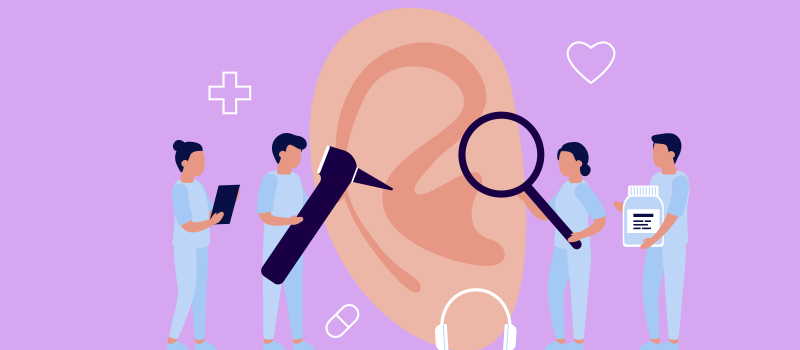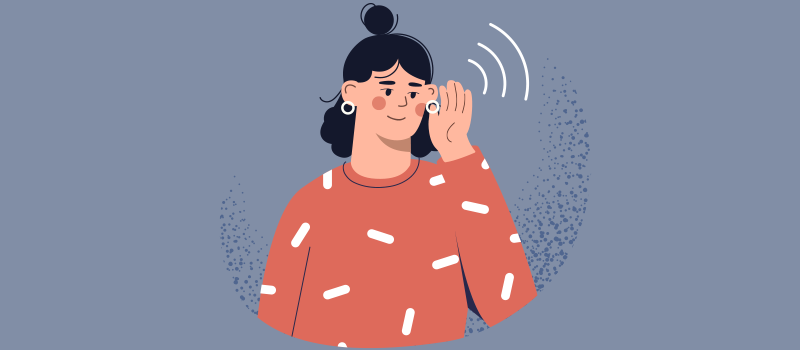What’s the Buzz
The Bee Healthy Blog
The Best Ear Infection Treatment

Otitis media, also known as ear infections, are very common in children. It is estimated that 5 out of 6 children will get at least one occurrence of ear infection by the time they are 3 years old. Ear infection can cause distressing symptoms such as ear pain, fever, fussiness leading to trouble sleeping in children. Adults can get ear infections, too, and some people are more prone to get them repeatedly. Symptoms of an ear infection in adults typically include earache, fluid drainage, and muffled hearing.
Sometimes ear infections resolve on their own. Doctors may, therefore, advise pain relief solutions and monitoring of symptoms (the-wait-and-see approach). However, at times, antibiotics may be necessary to clear an ear infection.
If you have symptoms suggestive of an ear infection, it is important to be medically examined, diagnosed, and properly treated by a healthcare professional. Without the proper treatment, an ear infection can cause hearing problems and other serious complications.
What is a middle ear infection?
There are different types of ear infections. A middle ear infection (medical term: acute otitis media) is just what it sounds like—an infection of the middle ear. The middle ear is an air-filled space behind the eardrum containing tiny vibrating bones that transmit sound.
Another type of middle ear infection is otitis media with effusion. In this condition, fluid builds up in the middle ear, but there is no infection and no symptoms like fever and ear pain.
Swimmer’s ear (otitis externa) is another type of ear infection in which the outer ear canal is infected.
What is the treatment for ear infections?
The most common causes of an ear infection are bacteria and viruses. The infection often spreads to the middle ear during an illness such as a cold, flu, or allergy due to congestion and swelling of the throat and nasal passages.
Antibiotics can help kill bacteria that cause ear infections, but they will not help an infection caused by a virus. Doctors can provide medical advice, diagnosis, and treatment for an ear infection, which may or may not include antibiotics, based on the cause of the infection and your symptoms.
What is the best antibiotic for ear infections?
A doctor will determine the type of ear infection through physical examination and patient interview. A diagnosis of acute otitis media can be confirmed by the presence of pus near the eardrum in the middle ear.
Some of the topical and oral antibiotics used to treat bacterial infections of the middle ear and external ear canal include amoxicillin, neomycin, ciprofloxacin, and ofloxacin.
It is worth noting that not all cases of otitis media or outer ear canal infection require antibiotic treatment. The body’s immune system can fight off many infections on its own. Typically, antibiotics are only indicated for a severe infection or an ear infection that worsens or does not improve within 2 to 3 days.
In mild cases, your doctor may advise the wait-and-see approach to see if rest, extra fluid intake, and pain medication can relieve earache and fever while the body fights off the infection. In that case, your doctor may send a prescription for antibiotics to be on hold at the pharmacy, then to be used if your signs and symptoms do not go away in a couple of days.
What is the best over-the-counter ear infection medicine?
Over-the-counter pain medications, such as acetaminophen (Tylenol®) and ibuprofen (Advil®, Motrin®), can help relieve earaches. It is important not to give children over-the-counter pain medications without checking with a doctor first. Some medicines are not recommended or even contraindicated for younger children. It is important to know that aspirin should not be given to children due to the risk of Reye’s syndrome, a rare but serious condition that affects the brain and liver.
Besides pain medicines, cough and cold remedies can relieve some of the symptoms of a middle ear infection. Again, be careful about using cough and cold medicines in children younger than 4 years old as they can lead to serious and potentially life-threatening side effects. Talk to a doctor or pharmacist about using over-the-counter (OTC) medicines in older children to ensure accurate dosage and indication before giving it to your child.
Over-the-counter ear drops do not contain antibiotics and will not kill any bacteria that could cause an ear infection. These eardrops usually contain herbal extracts or olive oil that may soothe ear pain. However, there is no scientific evidence supporting these remedies. It is a good idea to check with a doctor before using OTC ear drops for ear infections, especially in children.
What are some home remedies for an ear infection?
Be sure to see a doctor if you have a fever of 102.2F (39C) or higher, discharge (pus or fluid coming out of the ear), difficulty hearing, worsening symptoms, or symptoms that have lasted more than 2-3 days.
If you have mild symptoms, home treatments can help relieve the pain and inflammation associated with an ear infection by getting plenty of rest and drinking extra fluids. Some people find a warm compress brings comfort. Gargling with salt water may help soothe a sore throat and clear the eustachian tubes in the ears. The eustachian tube is a canal that connects the middle ear to the upper part of the throat and back of the nasal cavity—it regulates air pressure and drains fluids from the middle ear).
Due to pressure being built up in the infected ear, sleeping with the infected, painful side up may be more comfortable for children. For adults, performing neck range of motion exercises may relieve some pressure, resulting in relief of discomfort.
References:







SOCIAL